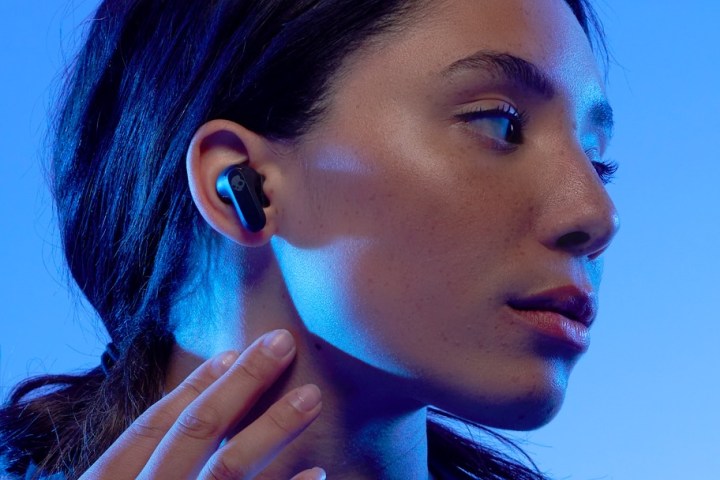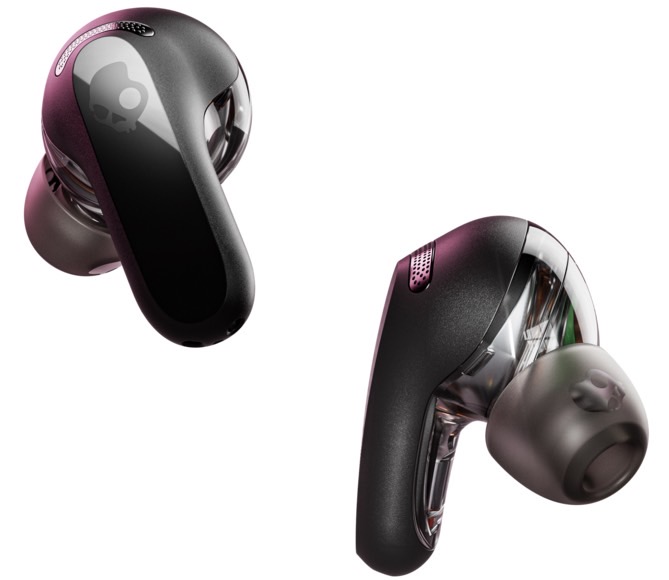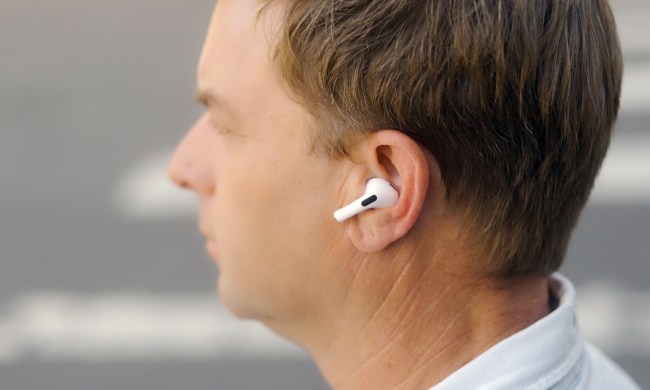
Skullcandy’s latest wireless earbuds are packed with features, and in typical Skullcandy fashion, they’re priced much lower than the competition. The new Skullcandy Rail ($80) and Rail ANC ($100) look very similar to Apple’s AirPods Pro 2, and in the case of the Rail ANC, they possess many of the same features. Both models are available on Skullcandy.com starting June 13.
Each Rail model uses the same shape and silicone eartips to seal your ear canal, with touch controls on both earbuds, however, the Rail ANC use transparent plastic for the inside half of the earbud, and they have an extra set of microphones. Here’s what you can expect from each Rail version.
Skullcandy Rail

The Rail are available in both black and bone colors and they offer very good battery life, with a claimed eight hours per charge in the earbuds and an additional 34 hours in the charging case, for a total of 42 hours of listening time. A 10-minute rapid charge gets you an extra two hours of playtime. Inside, the earbuds are equipped with 6mm dynamic drivers.
They’re IP55 dust- and water-resistant, and they have Skullcandy’s version of transparency mode (Stay-Aware) to help you hear what’s going on around you. What’s unusual for a set of wireless earbuds that aren’t made by big brands like Sony, Apple, Amazon, or Google is the Rail’s ability to do hands-free voice commands via Skullcandy’s Skull-iQ system. By saying “Hey Skullcandy …,” you can issue commands that will control your music, bring up Spotify Tap, trigger your phone to snap a photo, or launch your phone’s native voice assistant for even more commands. Amazon’s Alexa can be accessed this way too.
Skullcandy says that Skull-iQ will also be updated over time to offer more features. You can access preset EQ modes or create your own in the Skullcandy app, and the Rail also benefit from Mimi, a sound personalization technology that can tune the earbuds to your hearing. Bluetooth Multipoint for the simultaneous pairing of two devices is included, as is built-in Tile Finding Technology — each earbud can be located and forced to emit a loud sound from the Tile app. The company says the two built-in mics use AI to isolate the speaker’s voice and reduce background noise.
Skullcandy Rail ANC

The Rail ANC take the same formula as the Rail and extend it with larger drivers (12mm versus 6mm), two extra mics, and active noise cancellation (ANC), as the name suggests. You get all of the same features as the Rail, with a few tweaks to battery life to account for the ANC feature. With ANC on, Skullcandy says you’ll get over seven hours of use per charge, with an extra 20 hours in the case. With ANC off, those numbers jump up to 10 and 28 respectively.
The Rail ANC’s case can charge wirelessly. in addition to the included USB-C cable, and the ANC system is adjustable, letting you decide how much ANC or transparency you need.
The Rail ANC aren’t the first Skullcandy wireless earbuds to offer noise cancellation for $100 — the Sesh ANC were the same price when they launched — but the Rail ANC adds a lot of features. The Sesh ANC lacks wireless charging, Bluetooth Multipoint, and sound personalization, and they aren’t compatible with the voice-activated Skull-iQ system.
Skullcandy has been on a roll so far in 2023 (or is that a rail?). It previously released the Smokin’ Buds — an ultra-affordable set of wireless earbuds — and a new version of its Crusher ANC headphones.



